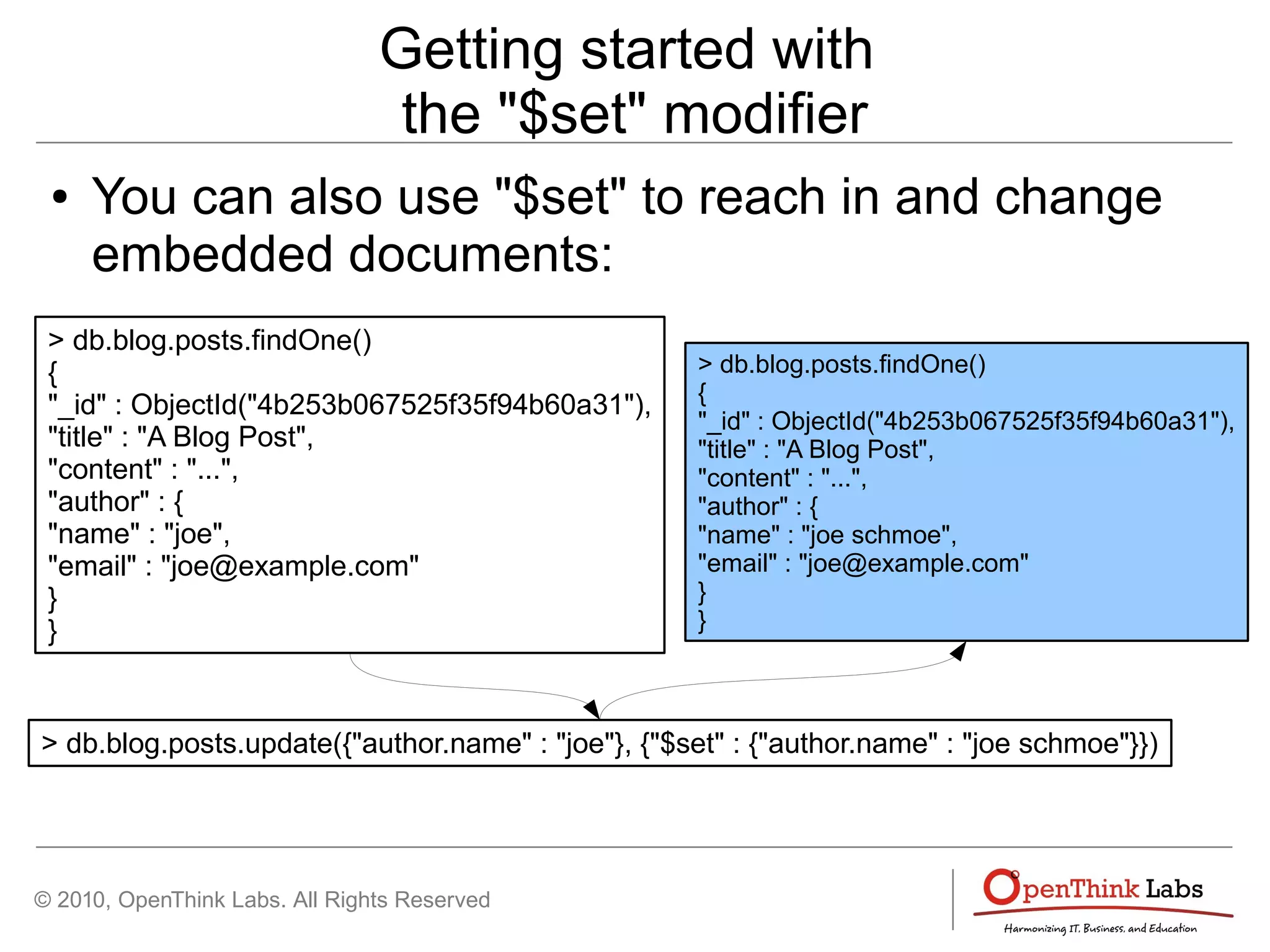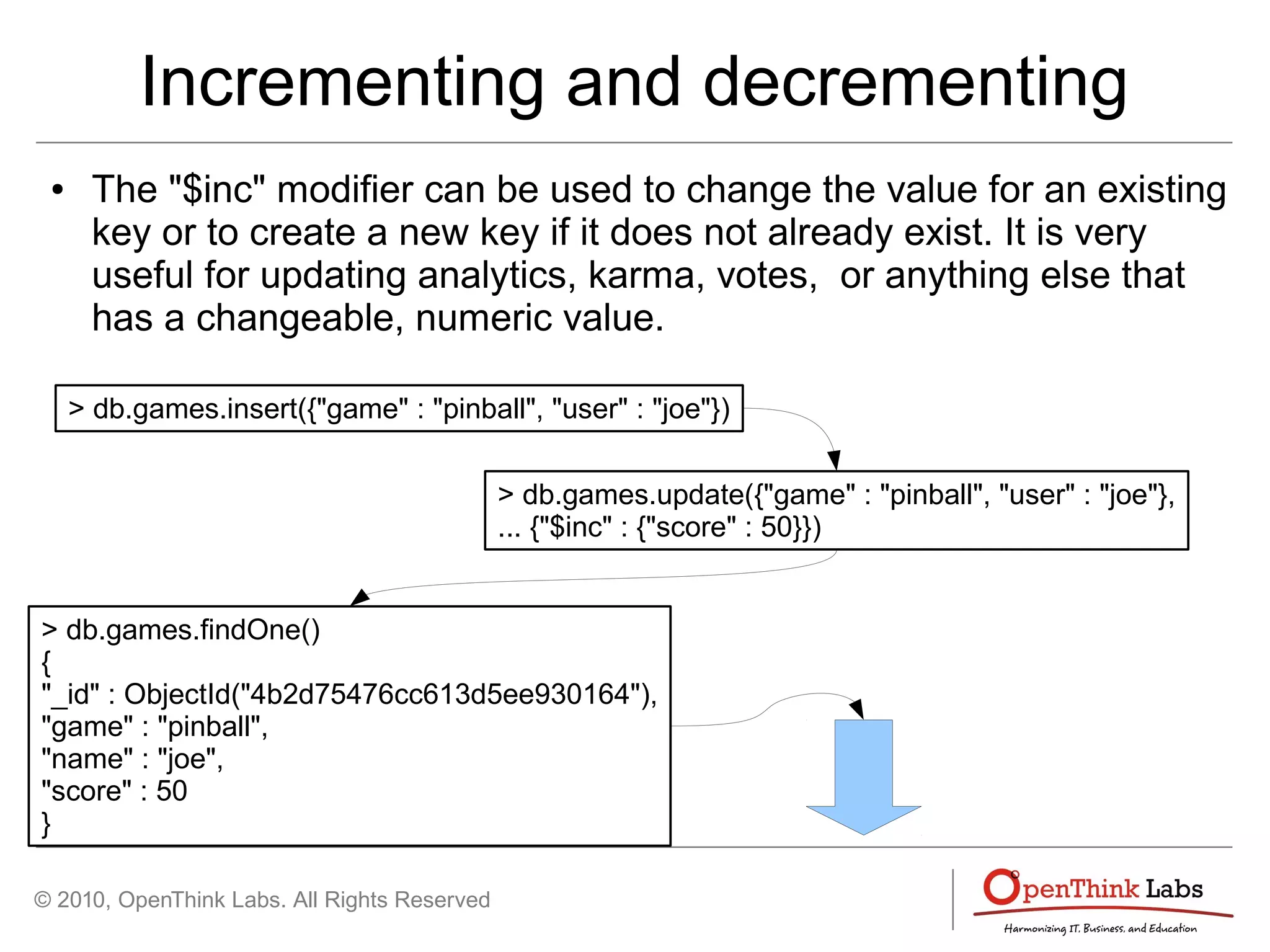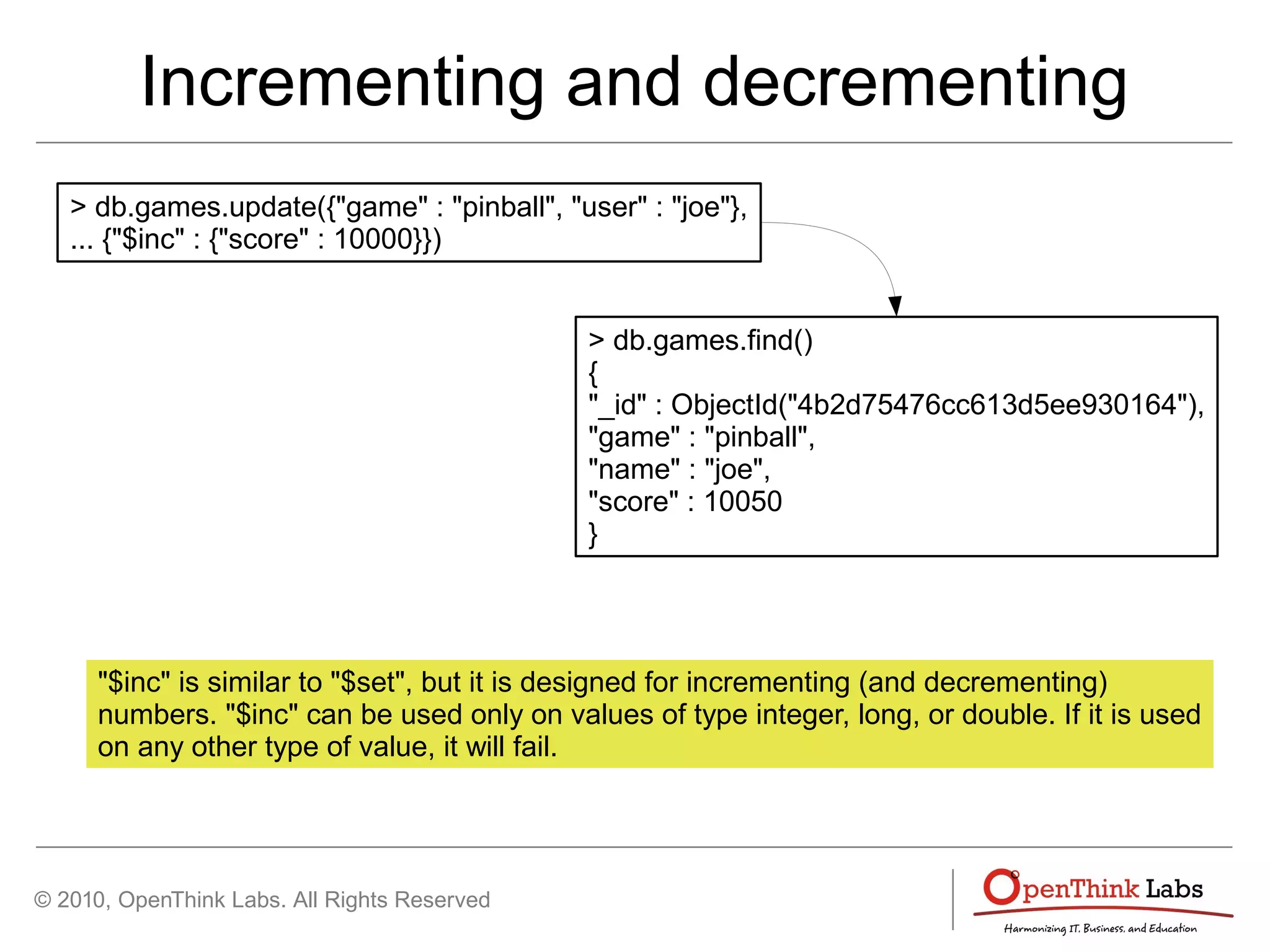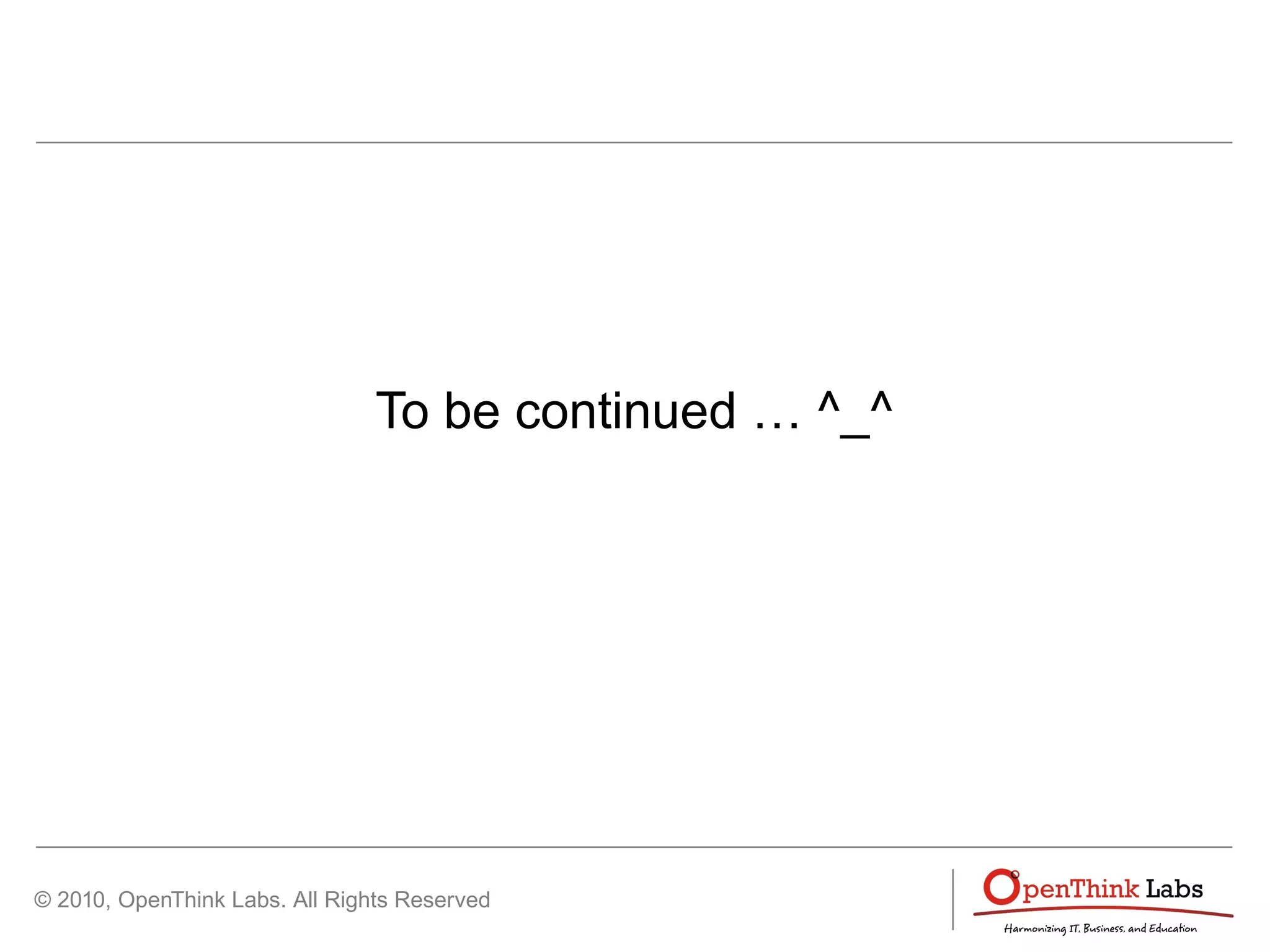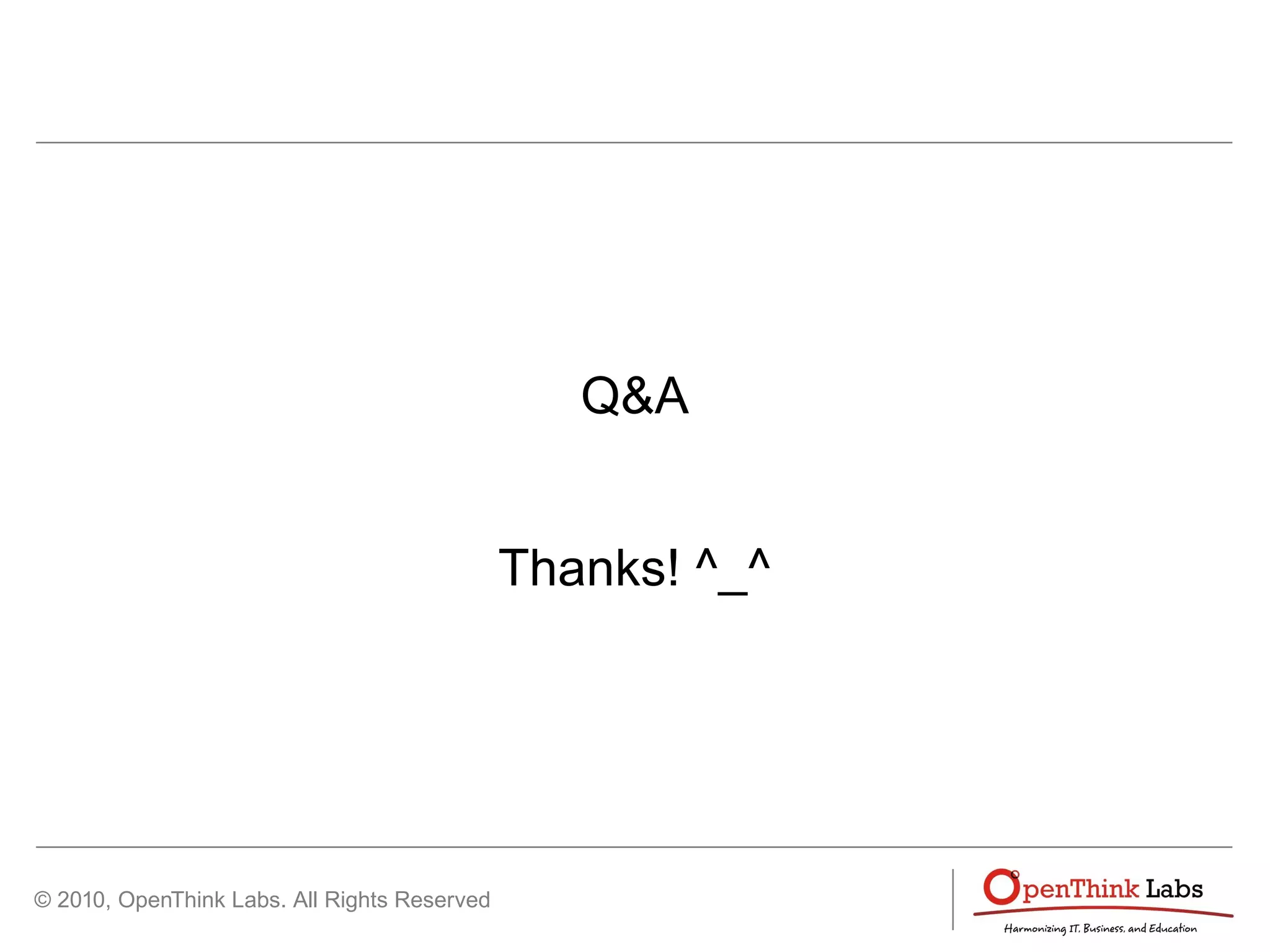This document discusses various methods for creating, updating, and deleting documents in MongoDB collections, including inserting documents, batch inserts, removing documents, updating documents using modifiers like $set and $inc, and choosing appropriate write speeds and safety levels. Key points covered include using batch inserts to speed up multiple document inserts, removing entire collections being faster than removing individual documents, and partial document updates being done efficiently using atomic update modifiers.
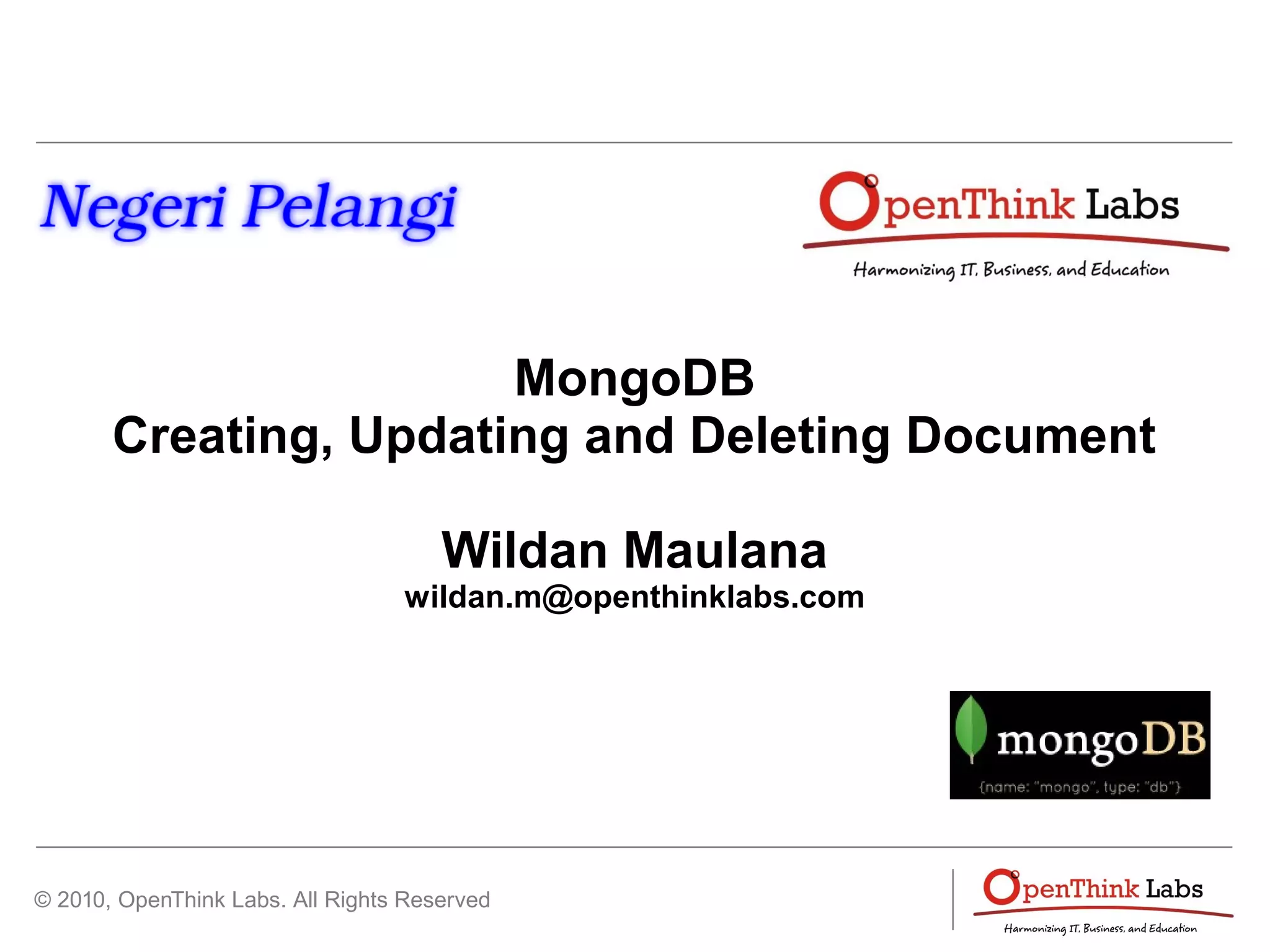
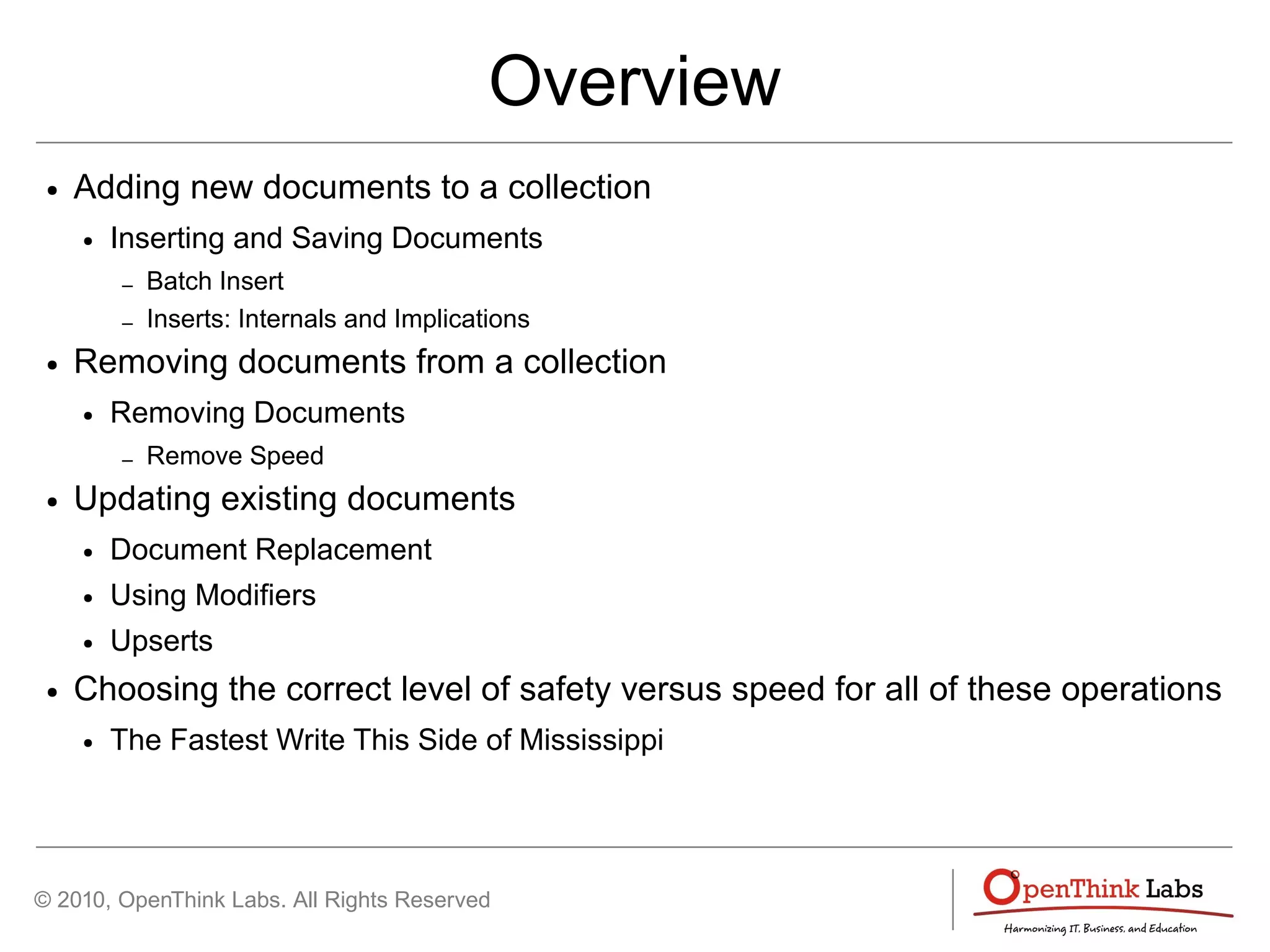
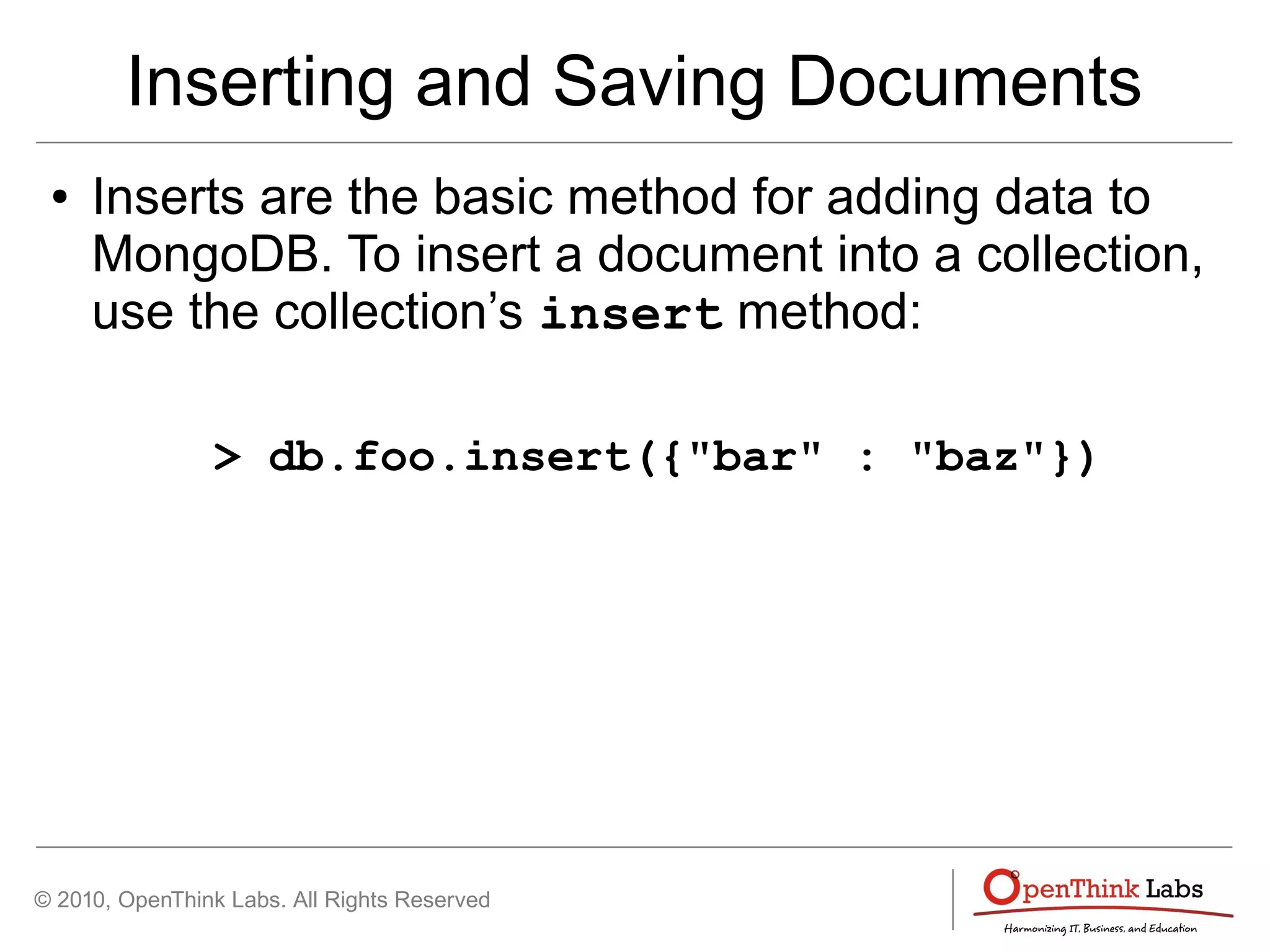
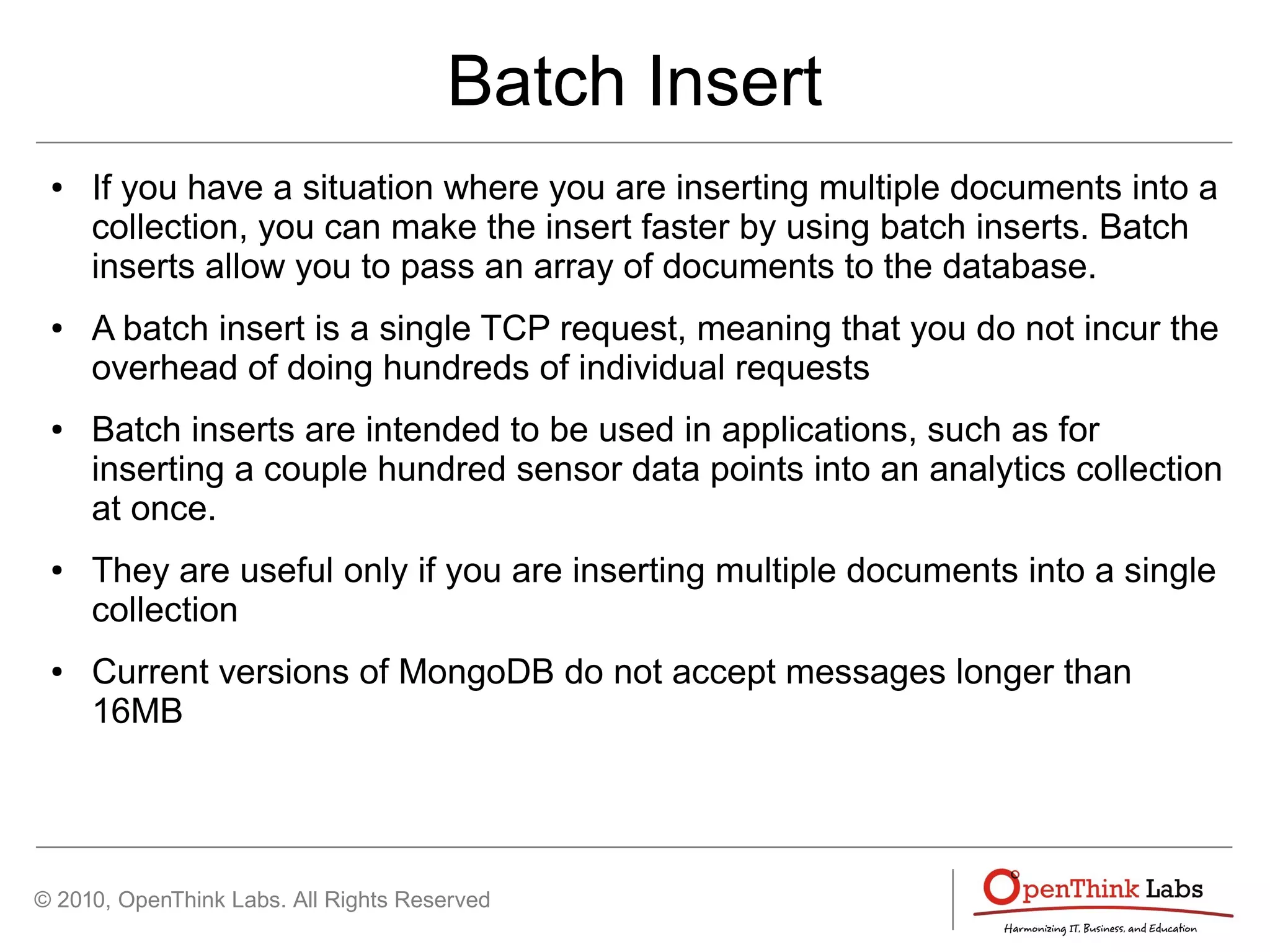
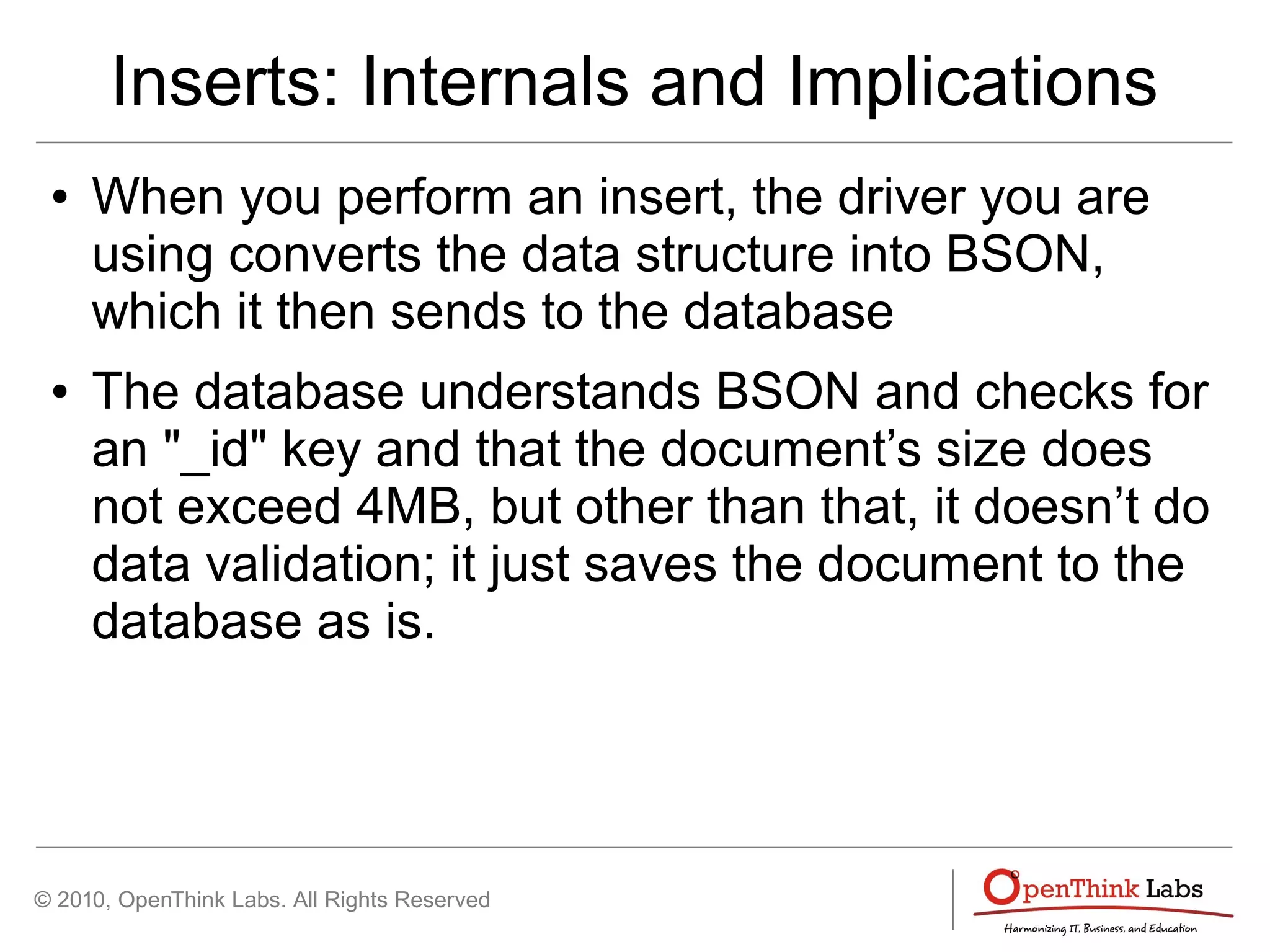
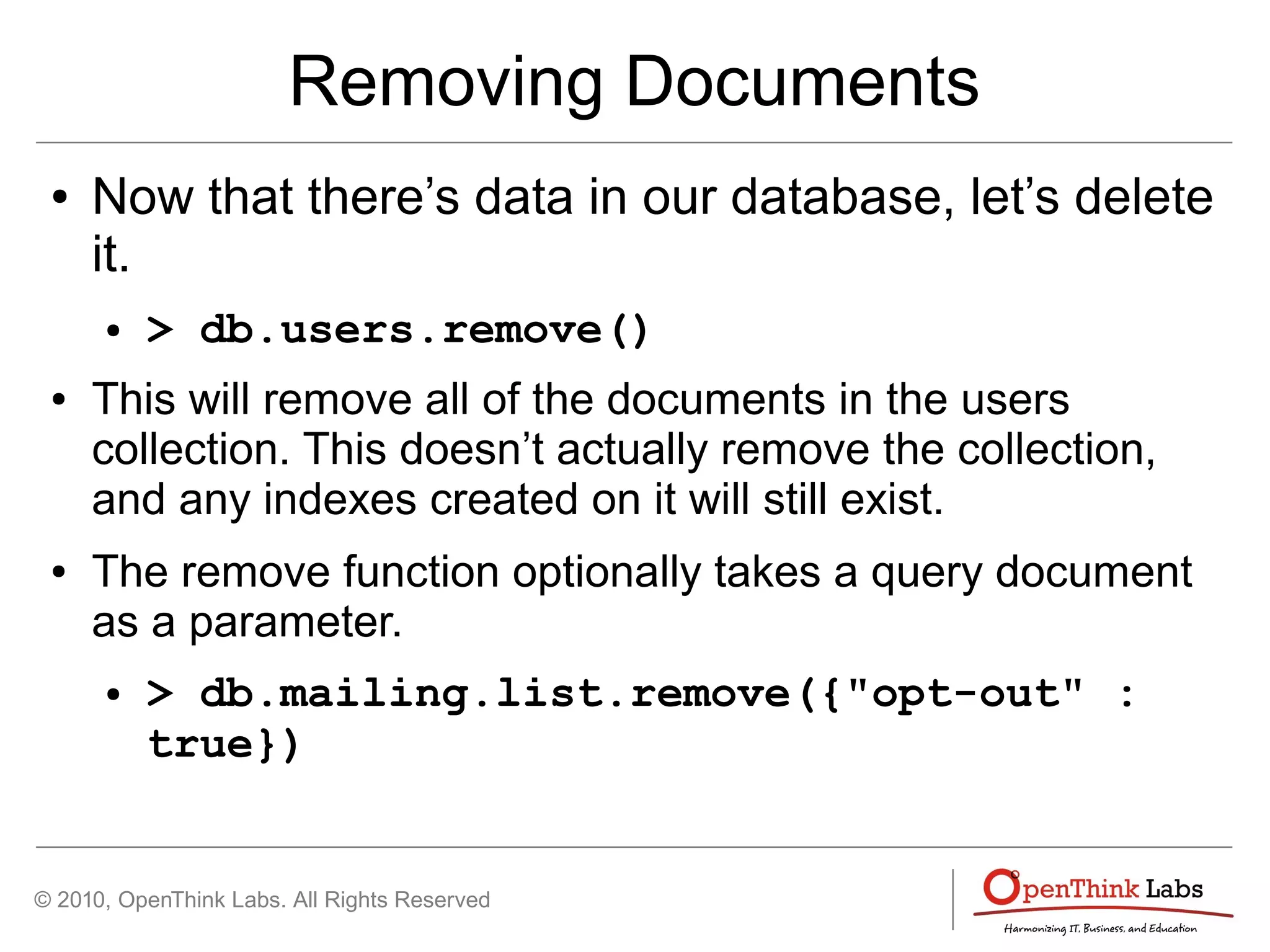
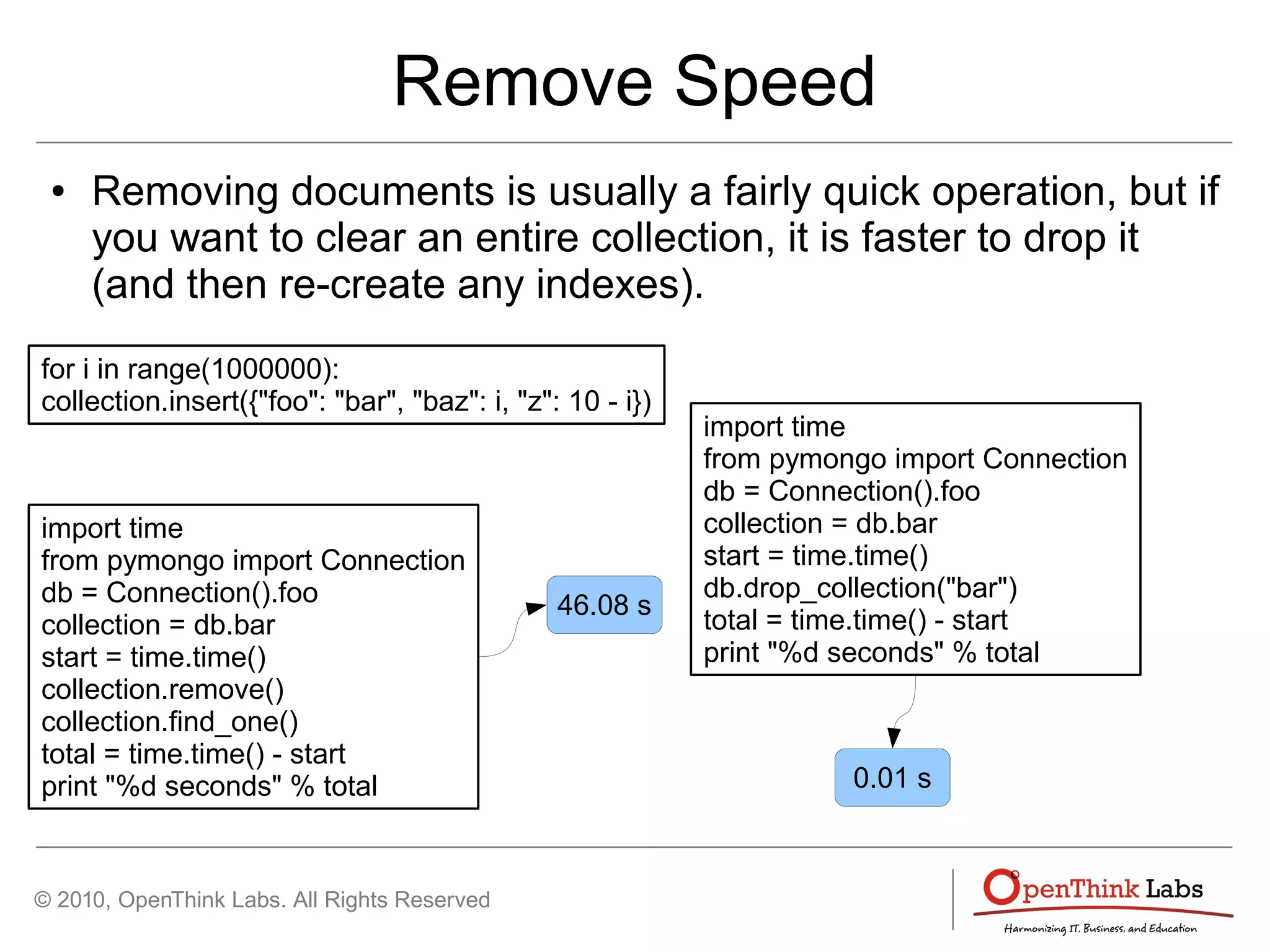
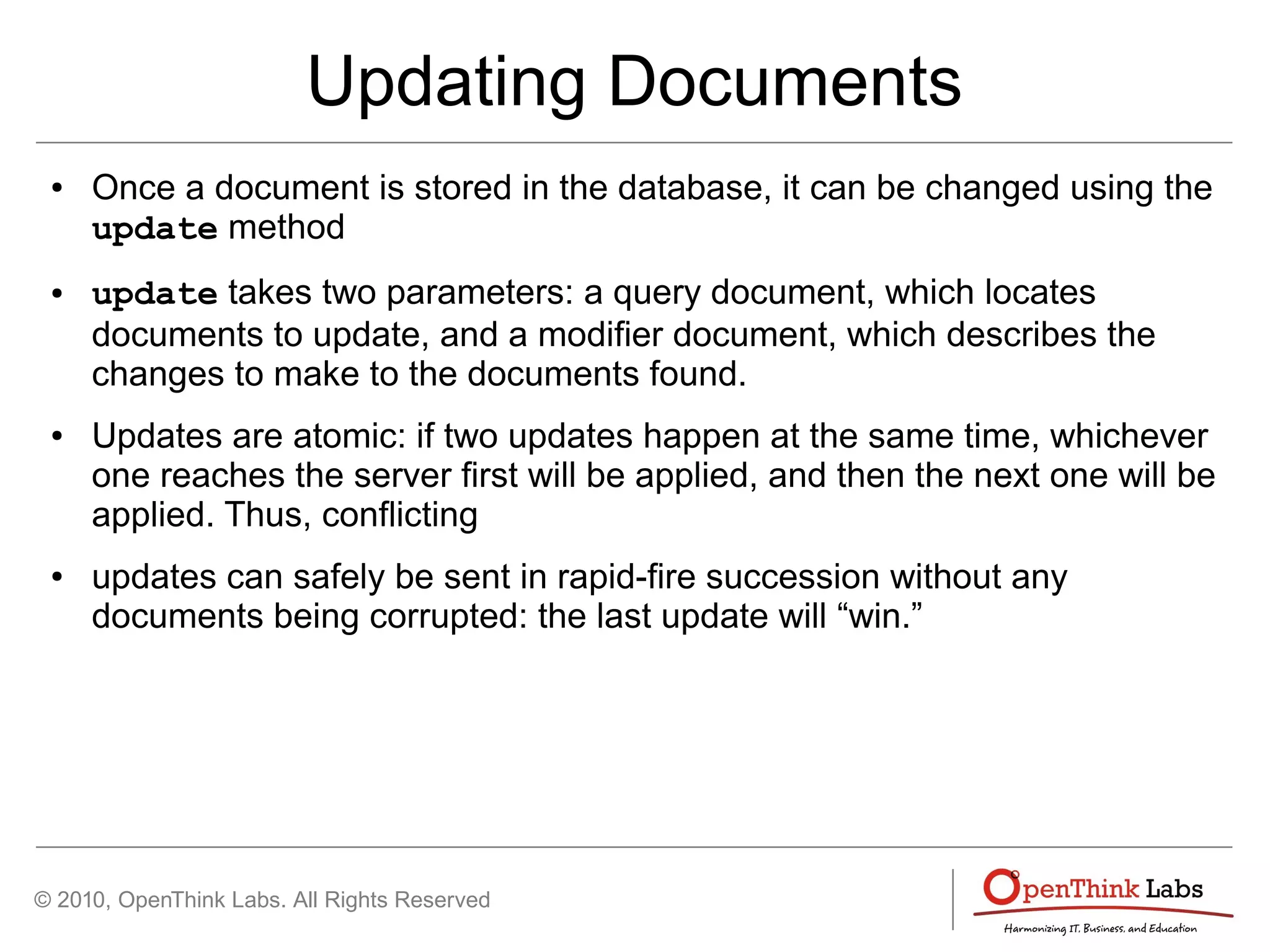
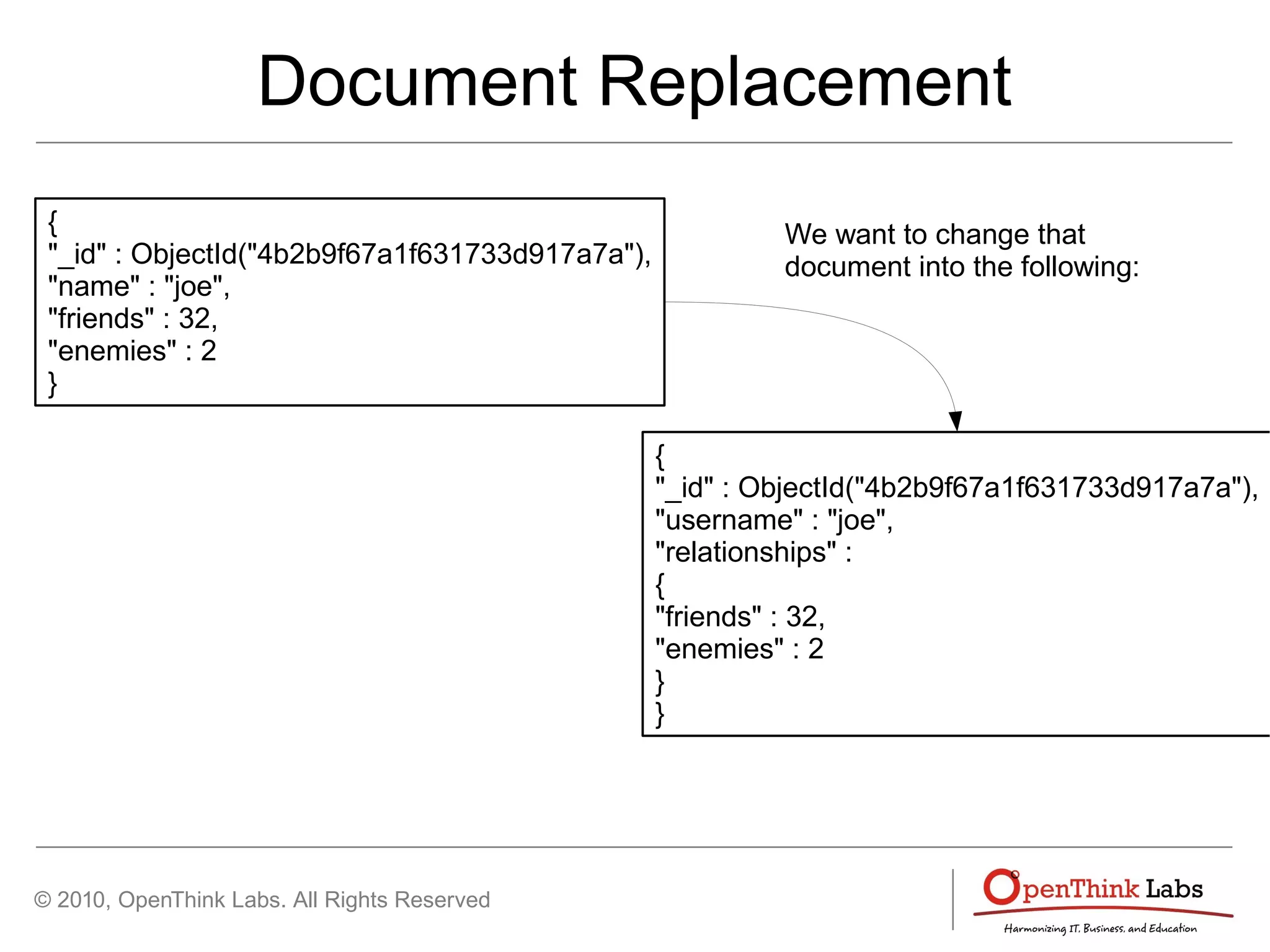
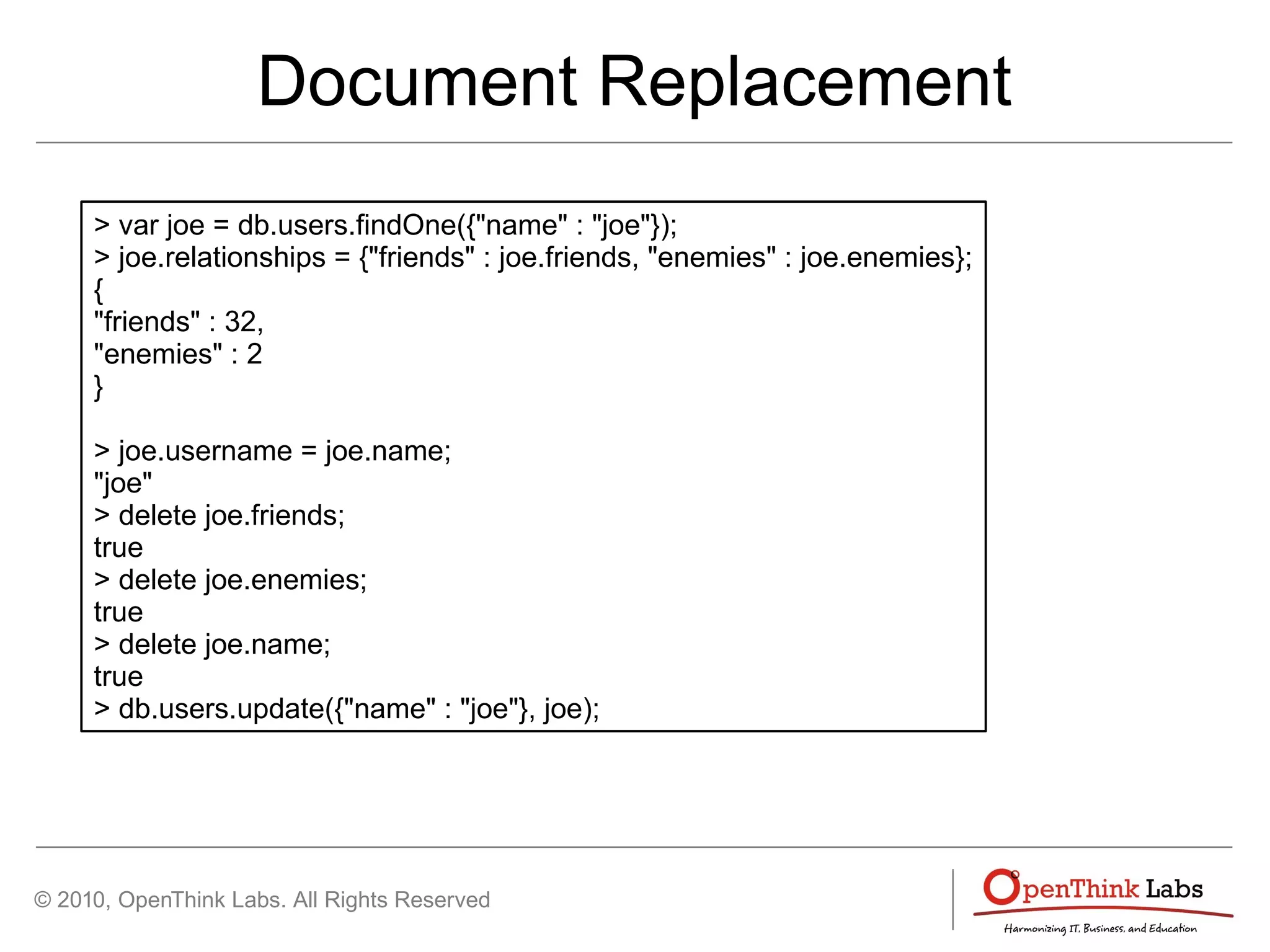
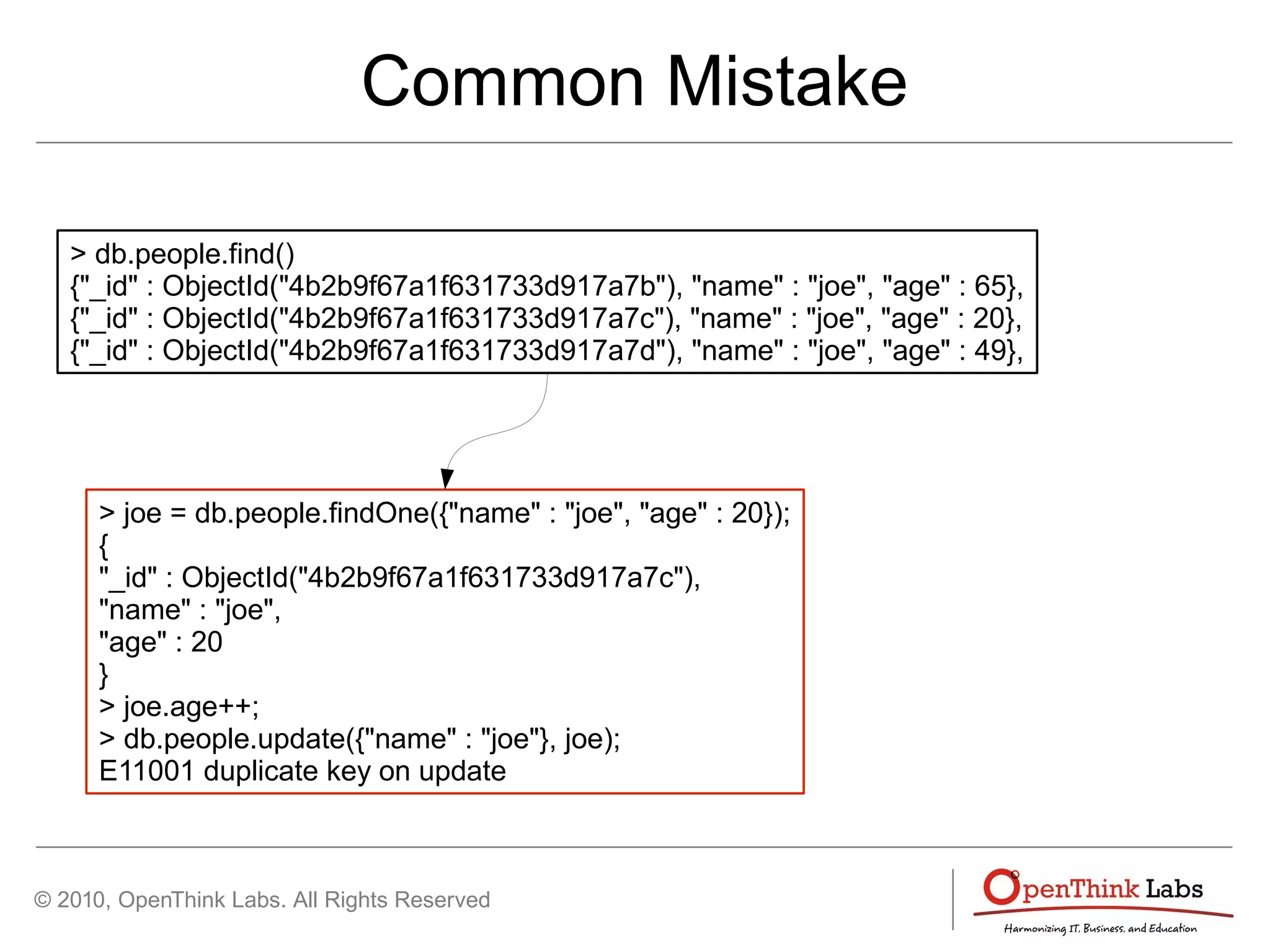
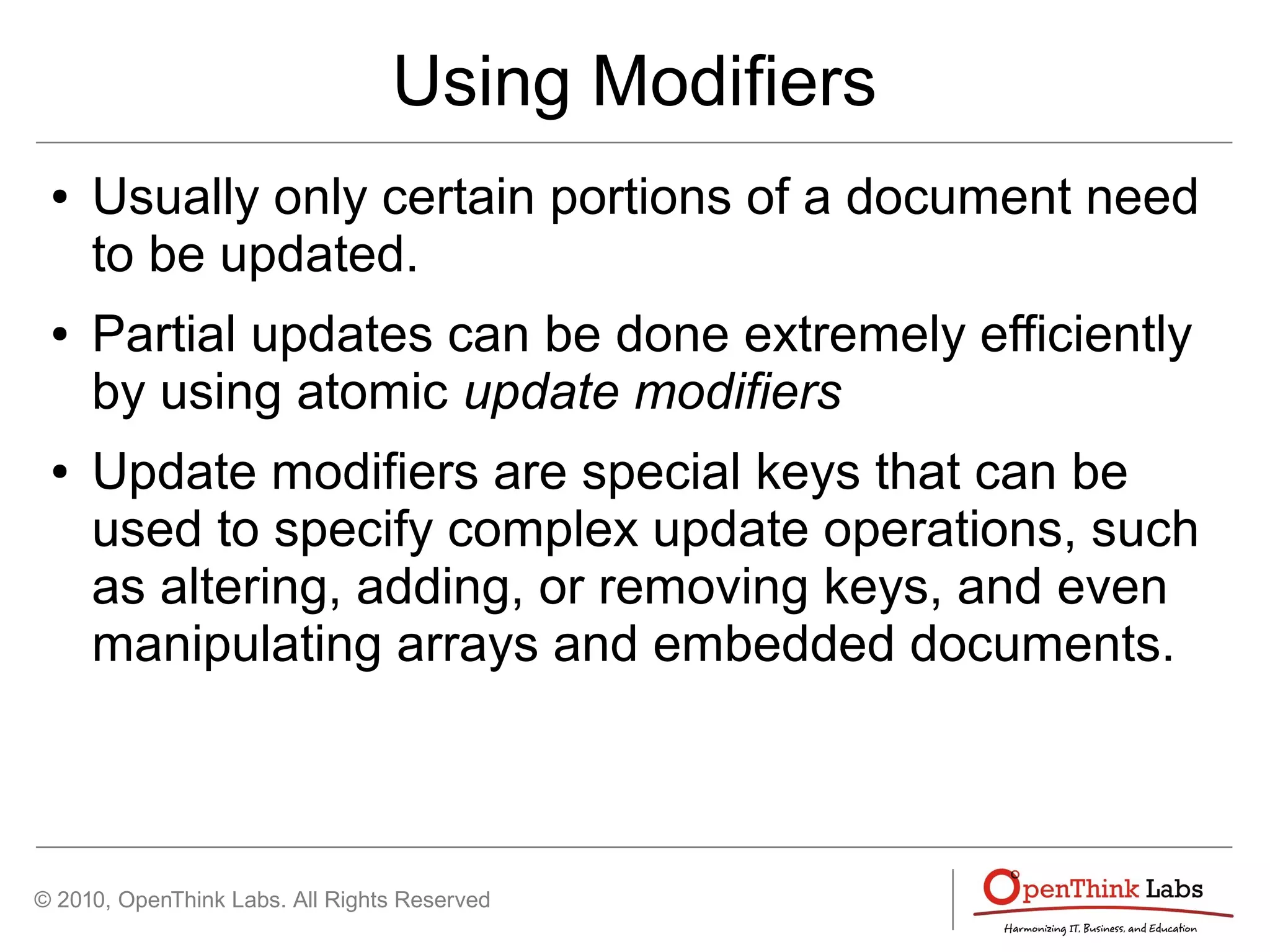
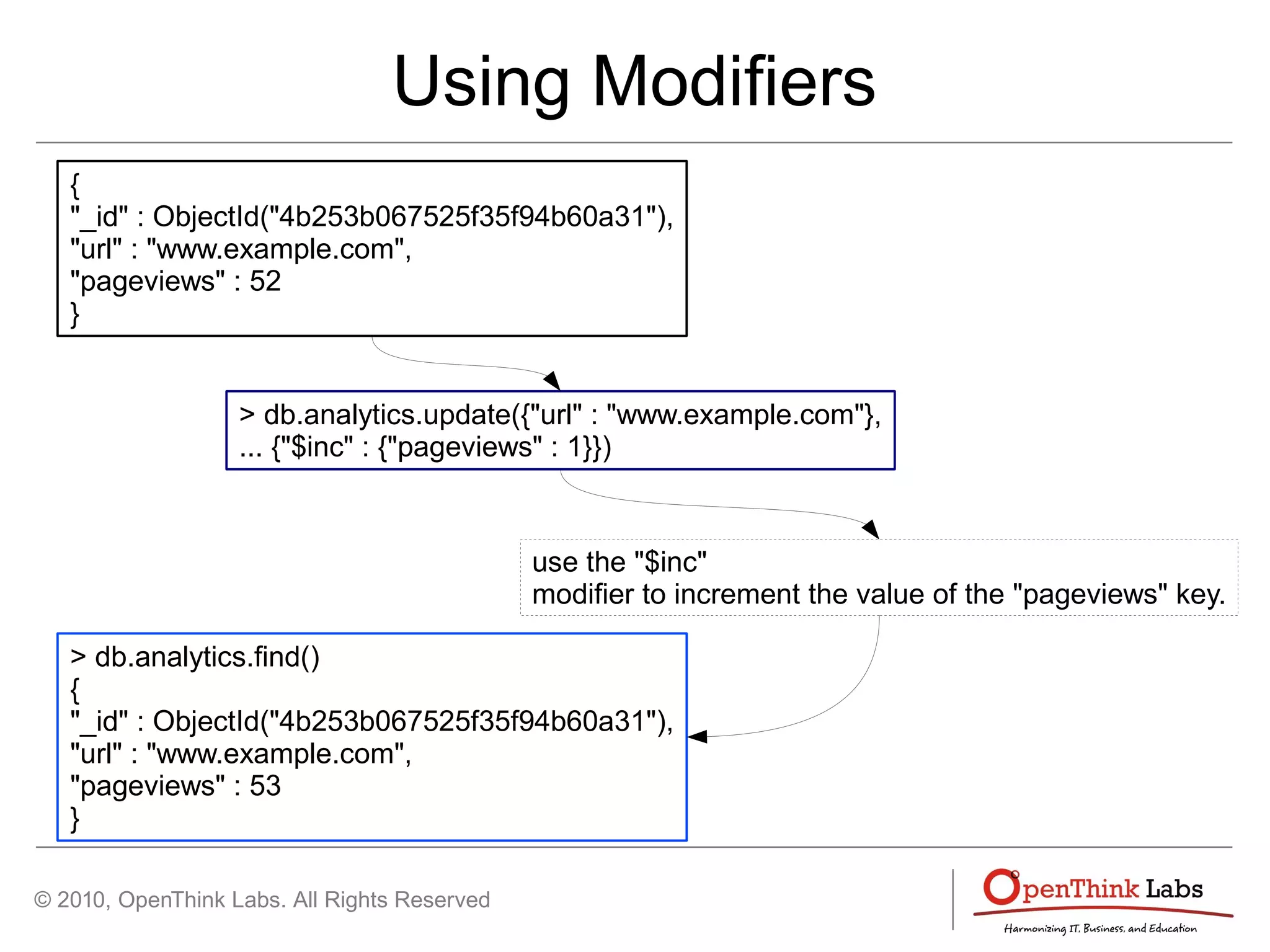
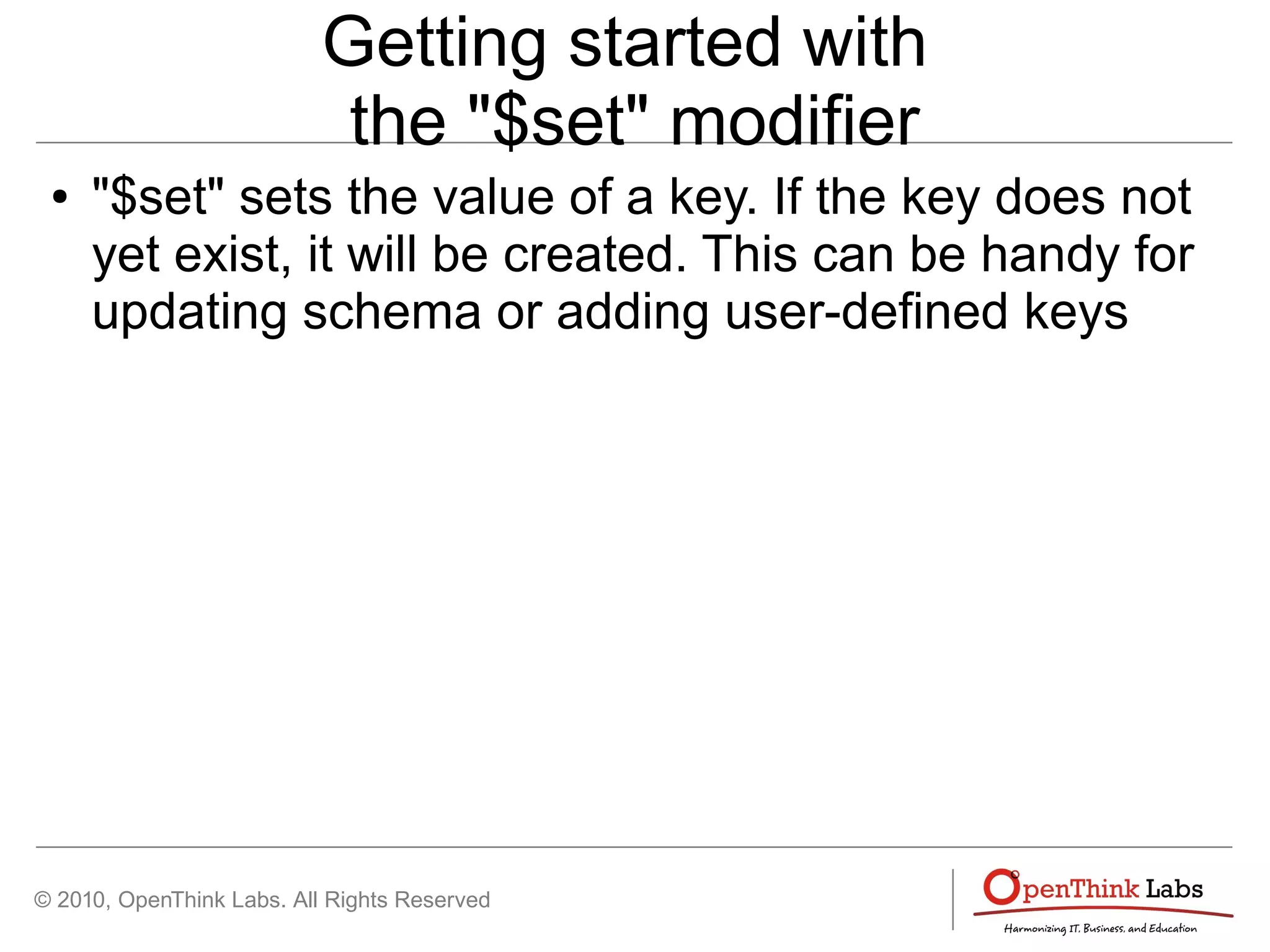
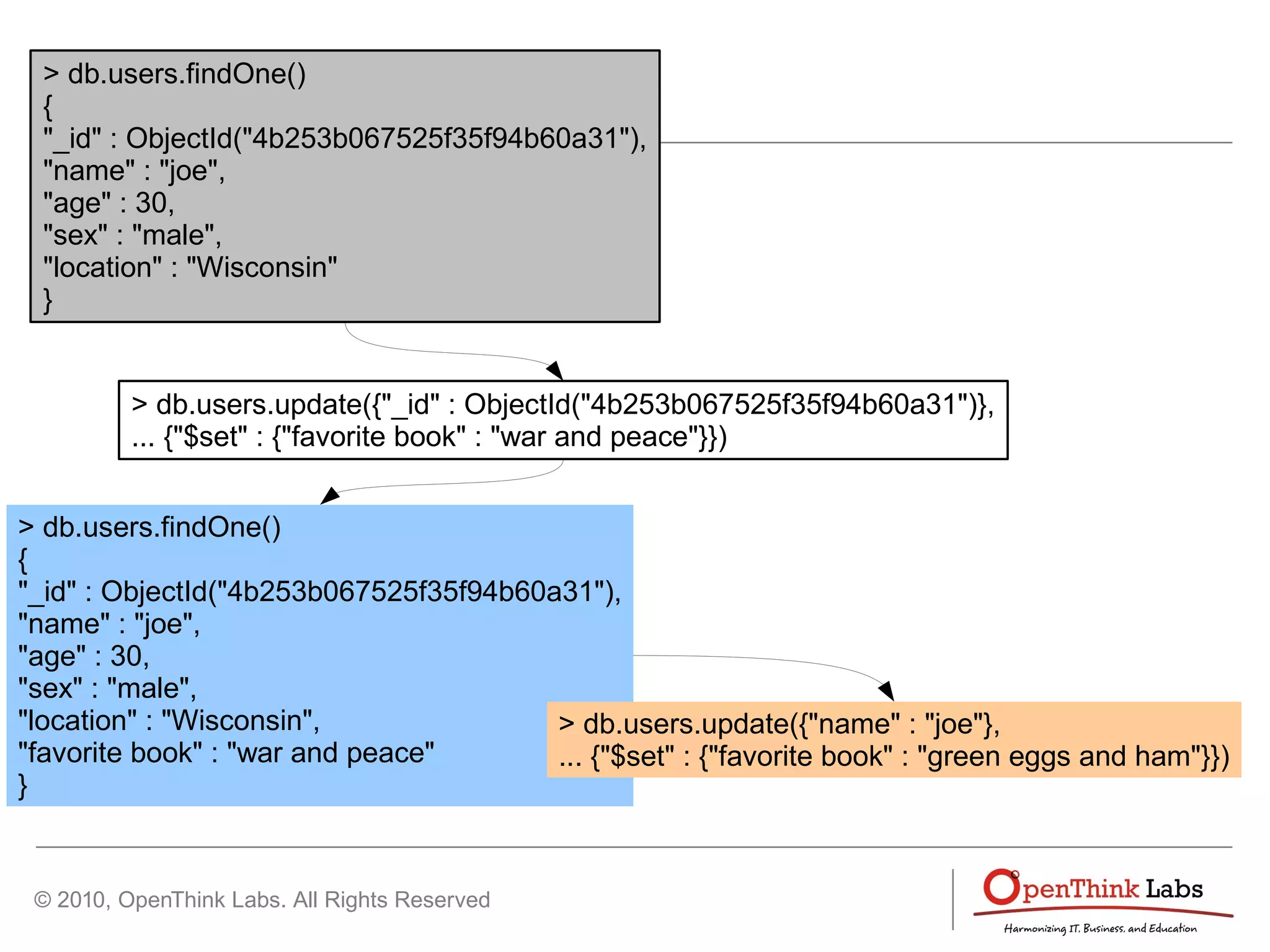
![© 2010, OpenThink Labs. All Rights Reserved
Getting started with
the "$set" modifier
● "$set" can even change the type of the key it
modifies. For instance, if our fickle user decides
that he actually likes quite a few books, he can
change the value of the “favorite book” key into an
array:
> db.users.update({"name" : "joe"},
... {"$set" : {"favorite book" :
... ["cat's cradle", "foundation trilogy", "ender's game"]}})
> db.users.update({"name" : "joe"},
... {"$unset" : {"favorite book" : 1}})
remove the key altogether
with "$unset"](https://image.slidesharecdn.com/3-creating-updating-and-deleting-document-101119015326-phpapp02/75/Creating-Updating-and-Deleting-Document-in-MongoDB-16-2048.jpg)
